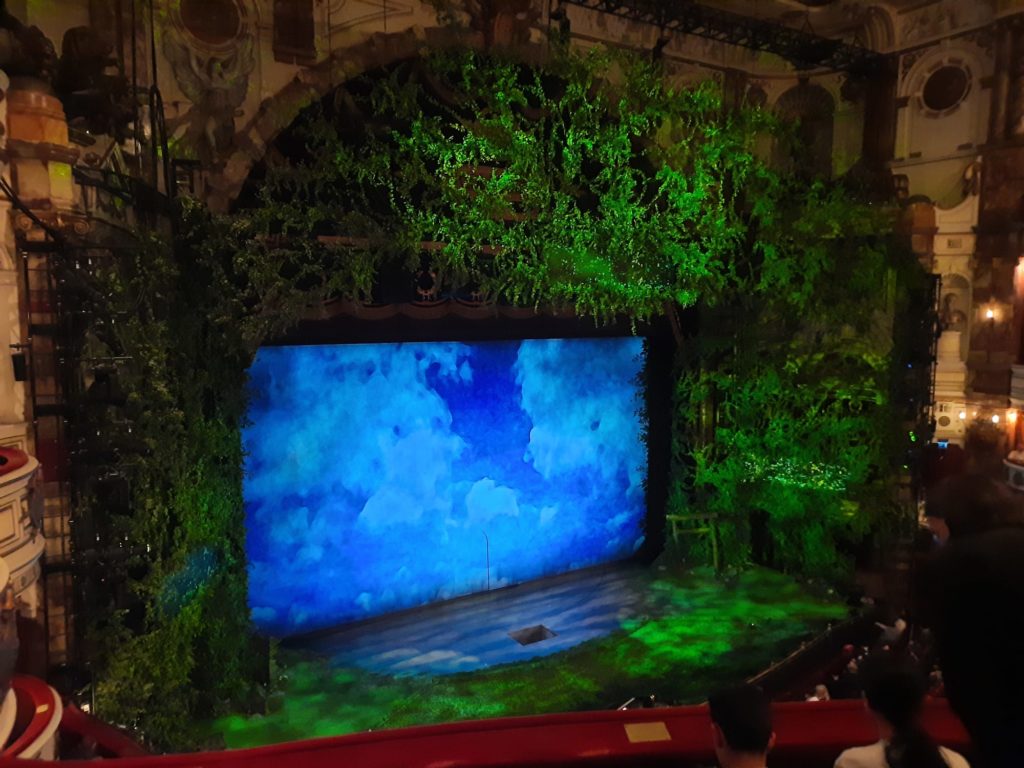Spirited Away – London Coliseum
Spirited Away brings the magic and charm of the Studio Ghibli film to the stage.

Spirited Away
Like buses, sometimes you can be waiting for a certain type of theatrical production for a while, and then they all come at once. So it is, seemingly, with stage adaptations of beloved Studio Ghibli animations by Hayao Miyazaki. Londoners have been lucky enough in recent times to have not one, but two. You may recall I saw and thoroughly enjoyed My Neighbour Totoro a Royal Shakespeare Company production. My exact words were “[t]his is so flipping charming you should get a ticket right now.” When it came to the next production, an adaptation of Spirited Away, I took my own advice and snapped up a ticket.
The two productions are really just a coincidence, with some key differences. My Neighbour Totoro was UK-based and in English. This one is a transfer from Japan (albeit with several non-Japanese creatives in the mix such as John Caird, who co-adapted the story with Maoko Imai and directs) and is performed in Japanese with English surtitles. Not quite as accessible for families, therefore. But it does have the benefit of being much closer to the original film. This includes some wordplay around names and kanji characters which is at the heart of the story.
Spirited Away is the story of Chihiro who, on her way to a new home in the countryside with her parents, is left to navigate a magical realm alone when her parents’ greed turns them into pigs. She gets a job working for Yubaba in a large bathhouse frequented by gods. When this world is disrupted by a spirit (known as Kaonashi or ‘No Face’), Chihiro must use her growing confidence to find a solution. That is really the elevator pitch: Miyazaki’s worlds are complex, and there’s a lot more to it than that!
Translating Animation Onto the Stage
Spirited Away won various awards, including Best Animated Feature at the 2003 Oscars. And no wonder. It has all the hallmarks of a good Miyazaki/Ghibli film. This includes charming characters, a fully-realised world, a score by Joe Hisaishi, and plenty of Ma. Ma, in this context, are the gratuitous scenes which don’t advance the plot, but ground it in time and place. Peaceful scenes, which give these stories their beauty. The success of the film is also often attributed to the blending of the manifold animist gods of the Shinto religion with the bathhouse culture that’s still central to Japanese culture today. It’s quirky, and it works.
The most exciting thing in seeing an animation adapted for the stage (at least for me) is seeing how the company translate the freedom of two dimensions into the restrictions of the three dimensional world. So far, I’ve found the solutions delightful rather than disappointing. Spirited Away has a complex revolving set (Jon Bausor) which shows us the bathhouse from different angles. The puppets (Toby Olié – known for his work on War Horse) are incredible. Equally impressive as those in My Neighbour Totoro, and equally whimsical as well. Many are manipulated by an ensemble cast in beige. The point is not to conceal the mechanics, but to show us how they work but have us believe in them anyway.
An Ensemble Cast for a Demanding Show
Interestingly, Spirited Away has a large cast who share roles for the most part. More like what you see for an opera or ballet than a typical theatrical production. With opportunities on offer like seeing Mari Natsuki reprise the roles of Yubaba and Zeniba she voiced in the original film, this has undoubtedly encouraged some audience members to return more than once over the run. It also shares the load in what is often quite a physical production. Again like My Neighbour Totoro, the choreography (Shigehiro Ide) mimics much of the fun and physicality of the story’s animated origins.
With a live orchestra in the pit, gods on the stage, and a child’s perspective to view it all from, Spirited Away is likely to spirit audiences away, too. There is perhaps a little less character development than in the animation, but I came away with a full heart. It’s also nice, when theatre more often transfers in the opposite direction, to see a Japanese production with surtitles in London’s biggest theatre. Whether or not you’re familiar with the film, this pleasing production is definitely worth a visit.
Salterton Arts Review’s rating: 4/5
Spirited Away on until 24 August 2024

